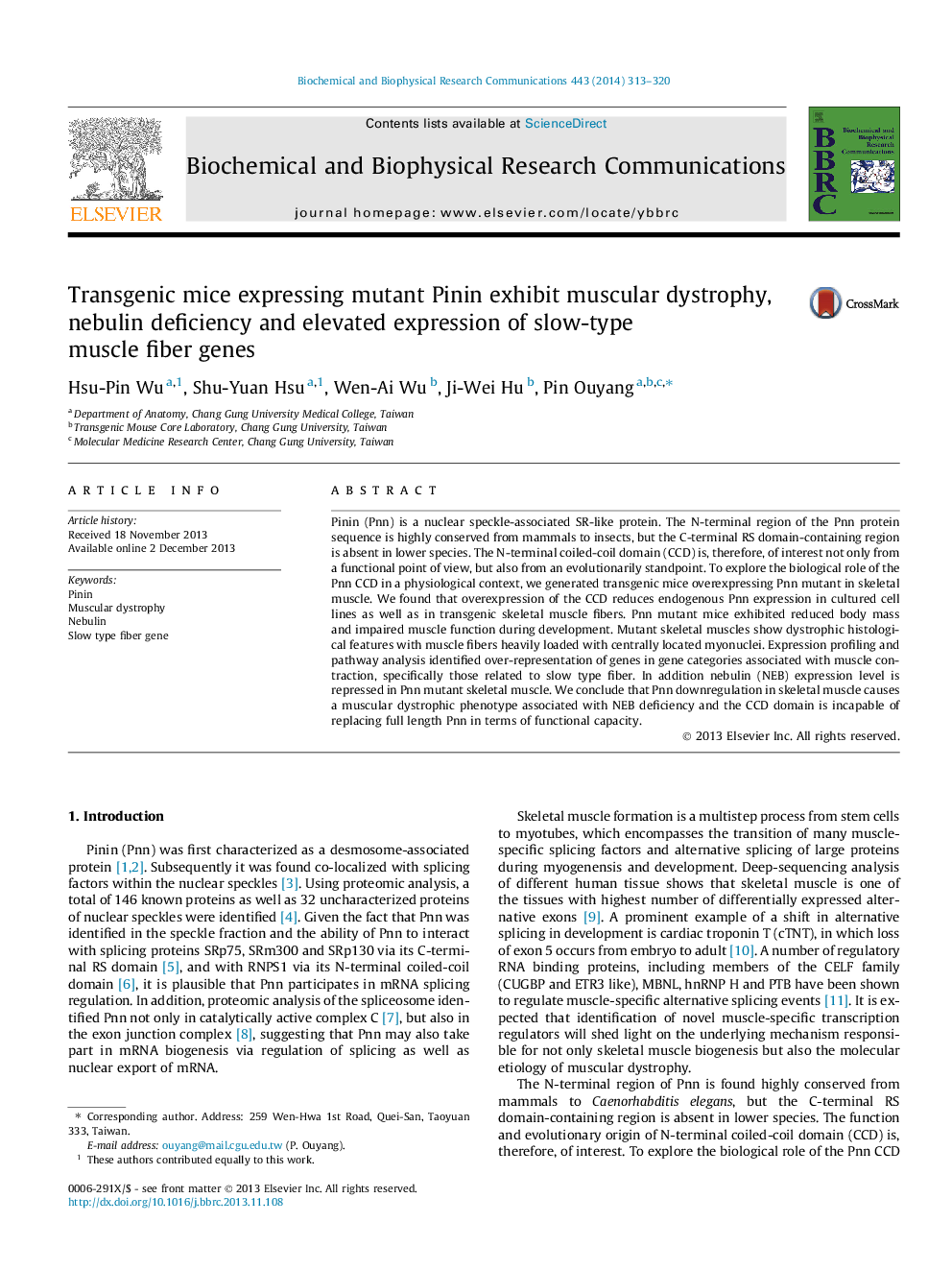| Article ID | Journal | Published Year | Pages | File Type |
|---|---|---|---|---|
| 10757529 | Biochemical and Biophysical Research Communications | 2014 | 8 Pages |
Abstract
Pinin (Pnn) is a nuclear speckle-associated SR-like protein. The N-terminal region of the Pnn protein sequence is highly conserved from mammals to insects, but the C-terminal RS domain-containing region is absent in lower species. The N-terminal coiled-coil domain (CCD) is, therefore, of interest not only from a functional point of view, but also from an evolutionarily standpoint. To explore the biological role of the Pnn CCD in a physiological context, we generated transgenic mice overexpressing Pnn mutant in skeletal muscle. We found that overexpression of the CCD reduces endogenous Pnn expression in cultured cell lines as well as in transgenic skeletal muscle fibers. Pnn mutant mice exhibited reduced body mass and impaired muscle function during development. Mutant skeletal muscles show dystrophic histological features with muscle fibers heavily loaded with centrally located myonuclei. Expression profiling and pathway analysis identified over-representation of genes in gene categories associated with muscle contraction, specifically those related to slow type fiber. In addition nebulin (NEB) expression level is repressed in Pnn mutant skeletal muscle. We conclude that Pnn downregulation in skeletal muscle causes a muscular dystrophic phenotype associated with NEB deficiency and the CCD domain is incapable of replacing full length Pnn in terms of functional capacity.
Keywords
Related Topics
Life Sciences
Biochemistry, Genetics and Molecular Biology
Biochemistry
Authors
Hsu-Pin Wu, Shu-Yuan Hsu, Wen-Ai Wu, Ji-Wei Hu, Pin Ouyang,
